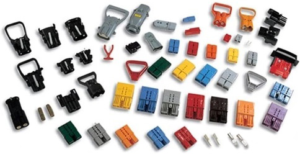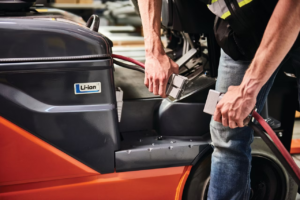AGV Charging Performance Grows by 200%, What Did This Charging Machine Company Do Right?
Including AGV chargers, we have now deployed over 400,000 terminal devices globally.”
“Compared to last year, our company’s AGV charger performance has grown by 200%.”
“We have mastered the core technology of AGV chargers, with our products having a self-manufacturing rate exceeding 70%.”
“Our products have been widely implemented at customer sites such as HELI, BYD, Hangcha Intelligent, HAIROBOTICS, Guozi, MIR, JingSong, Siasun, and Noli Intelligent, where their stability has been fully verified.”
Recently, ES power shared the latest development trends of this AGV charger manufacturer in an interview with New Strategy Mobile Robot All Media.
From a technical perspective, although there are significant differences between new energy vehicle charging stations and AGV chargers in terms of power, speed, interfaces, and protocols, they share certain similarities in charging principles and protective devices. The challenges faced by charging stations in communication reliability, charging efficiency, real-time management, and environmental adaptability are also current technical requirements for AGV chargers.
For the AGV/AMR field, ES power has launched automatic charging equipment for light-duty shuttle handling robots, heavy-duty shuttle handling robots, and side-charging telescopic AGV forklifts. These products are widely used in various vehicles including logistics AGV carts, automated warehouse shuttles, hidden traction robots, inspection robots, AGV forklifts, and heavy-duty AGVs.
In addition to complete machine products and overall charging solutions, ES power also provides key components and core modules within charging devices. Their mobile robot automatic charging module combinations include contact and non-contact wireless charging, which support some original equipment manufacturers (OEMs) in independently developing charger products.
While focusing on the lithium battery fast charging track, ES power also closely monitors the customization trend in the AGV industry, paying attention to balancing the relationship between non-standard customization and standardization of charging products.
ES power mentioned: “At first, each OEM had different project requirements, such as vehicle height, charging mode, etc., which required completely customized charging products. However, completely customized products make it difficult to establish advantages in cost control and mass production. Therefore, we integrated innovations in product development based on commonalities among enterprises, striving to develop products that can meet diverse needs. We did it, and we did it right.”
In product design, ES power made the height and voltage range of the charger adjustable, allowing its relatively standardized and universal chargers to fit different models, significantly alleviating the passive situation faced by charger manufacturers under high customization.
Combining ES power’s practices in balancing standardization and customization, ES power stated: “Of course, if AGV prices continue to be squeezed, then standardization is inevitable; but if the industry wants to maintain a high-profit state, companies will still maintain their own unique customizations to enhance brand stickiness.”
ES power believes that the AGV market is highly dynamic, and it is necessary for component enterprises to prepare the corresponding technical reserves. In cases of severe product homogenization, the competitiveness of charger companies is more reflected in their charging solution capabilities.
“Especially when facing customization needs, whether the R&D speed of charging solutions can keep up in time depends on the supplier’s technical service capabilities. To gain market recognition, the stability of the product is more examined, which is the key to ES power’s almost ‘zero’ after-sales service.” In ES power’s understanding, the stability of the charger lies in the software’s stickiness to the product, which is the core that most ensures the stability and efficiency of the charger beyond hardware, and is also the key to standing out in the current low-price competition.
In addition to continuous exploration in technology, in response to the increasing trend of Chinese mobile robots going global, ES power actively follows up, continuously creating new growth engines.
“Chargers are different from other products; they must ‘shake hands’ with the host product and be set according to the customer’s scenario. So currently, we mainly follow the OEMs abroad.” ES power introduced, “Currently, ES power’s AGV intelligent charging and testing integrated products, including 24V50A\100A; 48V50A\100A\150A\200A; 80V100A\200A, have all obtained TUV European standards, American standards, and other authoritative certifications. This way, when domestic AGV manufacturers enter the overseas market, ES power can help customers solve the separate certification issues of chargers, thus saving their costs.”
—



